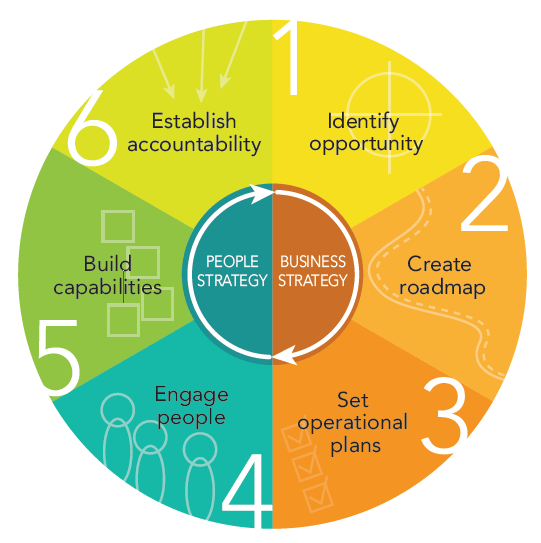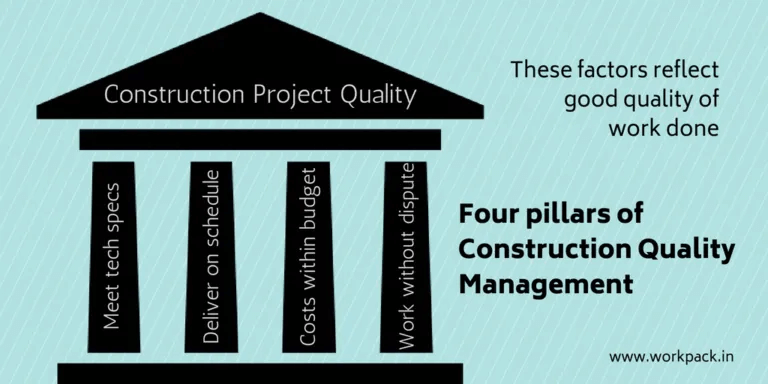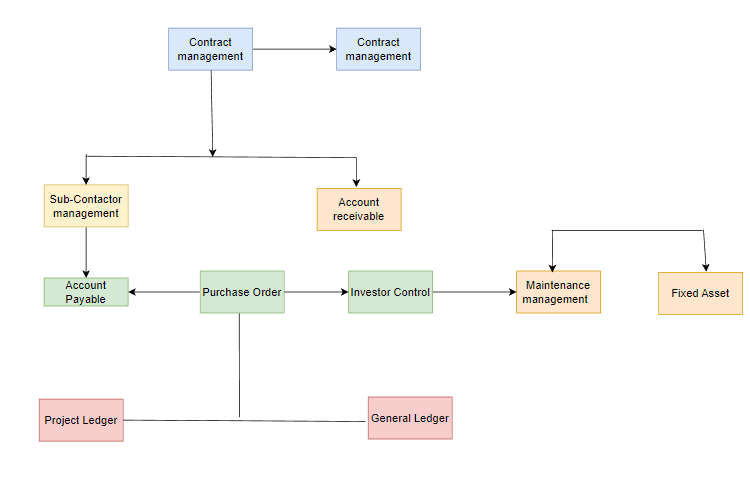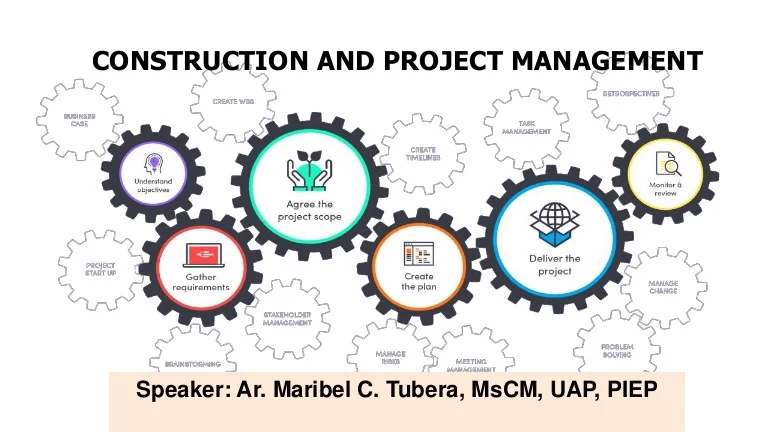- Mastering Construction Project Management: Lessons from the Forest Green Rover Stadium Project
- 1. Introduction: Mastering Construction Project Management: Lessons from the Forest Green Rover Stadium Project
- 2. Topic: 1: Leadership in Construction project management “Forest Green Rover Stadium”
- 2.1 Problem-Solving Ability:
- 2.2 Clear communication Skills:
- 2.3 Team building capability:
- 2.4 Adaptability:
- 3. Topic 2: Quality Management in Construction Project
- 3.1 Meet tech Specs:
- 3.2 Deliver on schedule:
- 3.3 Cost within budget:
- 3.4 Work without dispute:
- 4. Topic 3: Importance of Project Management in the Construction Industry
- 4.1 Cost management:
- 4.2 Time management:
- 4.3 Risk management:
Mastering Construction Project Management: Lessons from the Forest Green Rover Stadium Project
If you want to be successful in your assignments and improve your grades, use our free case study at Native Assignment Help. Our team of proficient assignment help experts is knowledgeable and experienced enough to produce outstanding papers that meet academic standards. Thus, come together with us at Native Assignment Help for sure success in everything.
1. Introduction: Mastering Construction Project Management: Lessons from the Forest Green Rover Stadium Project
Project management is necessary to guarantee that the project is finished on time, within budget, and to the required quality standards. Construction project management includes defining “the scope, objectives, and goals” of the project. This involves teaming up with the client or partners to characterize the extent of the venture, the ideal result, and the limitations, like the spending plan, course of events, and guidelines. A project charter or project management plan then provides an outline of the project's “scope, objectives, deliverables, timelines, and budget”. The venture director should likewise oversee correspondence between partners, workers for hire, and subcontractors to guarantee that everybody knows about what is happening and any progressions or issues that emerge. The endeavor boss ought to screen progress against the endeavor plan, recognize any issues that arise, and take helpful action as required. Controlling the project's budget, schedule, quality, and safety are all examples of this.
2. Topic: 1: Leadership in Construction project management “Forest Green Rover Stadium”
Leadership can guarantee a project's success, whereas poor leadership can cause delays, excessive spending, and other failures. Leaders should be able to communicate effectively in writing and speaking to ensure that everyone on the team understands the project's “objectives, deadlines, and budget”. Pioneers ought to have the option to lay out and keep a durable group by suitably designating errands and guaranteeing that individual from the group team up to accomplish project objectives (Ahmed, et al. 2021). Pioneers ought to have the option to change with the venture and adjust to changing circumstances and unexpected hardships. Convincing harbingers being developed task the board should moreover have solid areas for an of the advancement business, remembering specific data for improving materials and cycles, as well as data on rules and security requirements. They should also be able to “control budgets, negotiate with stakeholders, and keep track of project milestones and deadlines”. Construction projects are completed on time, within budget, and to the satisfaction of all stakeholders, effective leadership is essential.

Figure 1: The Construction Leadership Initiatives
2.1 Problem-Solving Ability:
Leaders in “Forest Green Rover Stadium” managers need to be good at finding solutions to problems. They successfully lead a construction project because the leader was able to “identify, analyze, and resolve issues” that arise throughout the project's lifecycle. Finding the issue is the most crucial step in effective critical thinking (Bilal Khan, 2022). It is essential for a leader to be able to recognize when a problem arises and comprehend its scope and effects. This requires listening to and comprehending the concerns of “team members, stakeholders, and clients”. Investigate the issue once it has been identified. Problem solvers who are successful are able to gather and dissect information in order to identify the issue's underlying cause Leaders must be able to devise and implement a solution to the problem. The leader of the construction team had an effective problem-solving ability to manage that project.
2.2 Clear communication Skills:
When managing complex projects like the construction of the “Forest Green Rover stadium”, leaders are able to communicate effectively. Leaders are able to actively listen to their team members and stakeholders in order to comprehend their concerns, demands, and expectations. To guarantee shared understanding, undivided attention involves focusing, posing explaining inquiries, and giving input. There should be no uncertainty in correspondence, which should be clear and compact. Leaders must regularly and openly discuss the project's challenges, successes, and progress with team members and stakeholders. This will help with building trust and assurance that everyone is in the complete arrangement. To meet the needs of various stakeholders, leaders need to be able to alter their communication style (Grill, et al. 2019). Using proper language and phrasing, they should have the option to discuss really with specialized specialists, project chiefs, workers for hire, and different partners. Pioneers should have the option to grasp their groups' and partners' perspectives and concerns. They must be able to communicate in a way that shows they care about them and are committed to solving their problems. Compromise abilities are fundamental for pioneers during the undertaking. They must be able to listen to both sides of the argument and come up with a solution that works for both parties and meets the project's goals. Effective communication is essential to the construction of the Forest Green Rover stadium's success
2.3 Team building capability:
For a project like the “Forest Green Rover Stadium” was built successfully, teamwork and effective leadership. The occupation as task pioneer is to unite a gifted gathering of experts and guarantee that they cooperate to accomplish the normal goal. Communication is crucial in any team, especially on construction projects. They are open a line of communication where everyone can freely express their ideas, problems, and worries. As a direct consequence of this, teamwork and project efficiency will both rise. Ensure that everybody in the group understands what their job is and what they need to do in the venture.
This will help with decreasing struggle and disarray and expanding responsibility.
Resolve disagreements promptly and objectively as a leader, promote communication and comprehension, and work for the benefit of the project. A positive work environment is necessary for effective teamwork and increased output (Imam, 2021). Make sure team members feel supported and valued, provide them with the necessary resources, and regularly acknowledge their efforts. Open lines of communication, clearly defined roles and responsibilities, collaboration, recognizing accomplishments, resolving disagreements, and fostering a positive work environment are all necessary for effective teamwork on a construction project like the “Forest Green Rover stadium”. You can guarantee that the group cooperates to accomplish the venture's goals by trying these ideas.
2.4 Adaptability:
Leadership in construction projects like the “Forest Green Rover Stadium” had a high level of adaptability for their project's success. The complexity of construction projects includes deadlines, risks, and multiple stakeholders. Leaders need to be able to adapt to changing circumstances and effectively manage their team in order to ensure that the project stays on course and achieves its objectives. The capacity to discuss successfully with their group and partners is perhaps the main ability that pioneers need to have (Pham, 2019). This includes having the option to customize their correspondence style to meet the needs of different people. They could need to, for example, haggle with providers or make sense of specialized ideas for project workers. Effective communication is essential if the project is to run smoothly and everyone is on the same page.
Another important quality of adaptability is the capacity to manage risks. Construction projects are fraught with danger, and anything can go wrong at any time. Trailblazers ought to have the choice to expect and direct risks, change their game plans as necessary, and assurance that the endeavor stayed on track. A flexible mindset and the willingness to change course when necessary are required for this. Pioneers ought to have the option of convincing and inspiring their group to do their best work. This includes having the option to change how they exercise authority to meet the needs of their coworkers. While driving development projects like the Woodland Green Meanderer arena, flexibility is fundamental. To ensure that the project is finished correctly, leaders need to have important skills like risk management, flexibility, effective communication, and team motivation.
3. Topic 2: Quality Management in Construction Project
Quality organization is an indispensable piece of any improvement project, including the improvement of the “Forest Green Rover Stadium”. The assurance that a project was “completed on time, within budget, and to the highest quality standards” is the primary objective of quality management (Chen, 2019). One way to accomplish this is by employing a methodical strategy that entails continuously improving the quality of project deliverables, defining quality requirements, monitoring and controlling project processes, and determining quality objectives. “The Forest Green Rover Stadium” project will require a comprehensive quality management plan that outlines the processes and procedures for ensuring that the project meets the required quality standards. The project's quality objectives must be clearly defined and communicated to all stakeholders. These objectives ought to be attainable, measurable, and consistent with the project's objectives. The quality was specified in the contract documents and project specifications. Establishing quality control procedures is necessary to guarantee that the project processes are carried out in accordance with the quality objectives and requirements. In order to ensure that the project expectations adhere to the necessary quality guidelines, these cycles ought to include assessments, tests, and check strategies.

Figure 2: Four Pillars of Project Quality Management
3.1 Meet tech Specs:
Building Data Displaying (BIM), a computerized model-based way to deal with development projects the executives is one of the potential tech spaces in quality administration that could be utilized for the UK development undertaking of the “Forest Green Rover stadium”. It may be used to create a 3D model of the arena, which can be used to identify potential quality issues and conflicts before construction begins. BIM can be utilized to monitor progress and identify areas that require additional work. Software for Standardizing procedures and guaranteeing practice consistency can be made easier with the help of software for quality management. With this kind of software, quality metrics was tracked, quality documentation can be managed, and areas for improvement can be found (Desai, 2019). Software solutions for quality management include Donesafe, IsoMetrix, and Intelex. Flying reviews of the building site involving robots can help with distinguishing likely quality issues. They were before beginning construction, VR and augmented reality can be used to simulate the process and identify potential quality issues. This might make it less likely that there will be mistakes and rework. Using technology in quality management, the “Forest Green Rovers stadium” construction project can be finished on time, within budget, and to the required quality standards.
3.2 Deliver on schedule:
Generated the successful completion of the UK construction project known as “Forest Green Rover Stadium”, they established a robust Quality Management system that places an emphasis on meeting deadlines. Develop a comprehensive Quality Management Plan (QMP) outlining the project's quality objectives, quality standards, and procedures, and quality assurance authority. To ensure that the project complies with the QMP's quality standards and procedures, form a Quality Control team. Lead standard evaluations and tests to perceive quality issues and assure consistency with the QMP. From the very beginning of the planning phase all the way through the very end, these inspections ought to be carried out. The project's progress toward the established quality objectives can be tracked with the help of quality metrics (Dong, et al. 2019). These metrics make it possible to identify potential problems early on and address them before they become major problems. Establish a program for continuous improvement that proactively addresses issues and identifies areas for growth. The undertaking's general quality ought to be the essential focal point of this program, as should its ideal consummation. The construction project known as the "Forest Green Rover Stadium" was finished on time and to the best possible quality.
3.3 Cost within budget:
The “Forest Green Rover Stadiums” had a great quality management team. They did their work very efficiently to complete the project under the budget. This construction project was a very high-cost project so maintaining the project cost within budget was very tough it was possible when there was an efficient team and the team is guided by a great team leader. In development projects, cost administration is a significant piece of value for the executives. The cost of a construction project is closely linked to its quality, the project team must ensure that the project stays within budget while still meeting quality requirements (McAdam, et al. 2019). The project team had developed a cost management plan that outlines the project's budget and the anticipated costs of “materials, labor, and other resources” in order to achieve this. Throughout the development process, the group was also monitoring the project's costs to ensure that they remain affordable. The development group probably fostered an expense in the executive's plan for the stadium project that incorporated a financial plan for the arena's development, considering the expenses of materials, work, hardware, and different assets. All through the venture, the group would have observed costs to ensure they were inside the spending plan and, if fundamental, remedied them to monitor costs. By keeping costs inside the spending plan, the errand gathering can ensure that the advancement project is done within the typical time frame and to the important quality rules, without outperforming the spending plan and causing money-related trouble on the endeavor.

Diagram1: Cost management in Construction Project
3.4 Work without dispute:
“Work without dispute” refers to carrying out all aspects of the project in a manner that meets the expectations of all parties involved without any disagreements or conflicts in construction project quality management. ”Work without dispute” requires clear communication, collaboration, and risk management throughout the entire project. This could involve obviously characterizing the objectives of the task, spotting possible places of conflict or struggle almost immediately, and attempting to determine any issues as they emerge (Ogunrinde, et al. 2021). The likelihood of disputes arising from work-related issues can be reduced by placing an emphasis on quality management, which can assist in ensuring that all completed work satisfies the required standards and specifications. In a development project, achieving “work without debate” necessitates a proactive and cooperative approach that places an emphasis on clear communication, risk management, and quality management at all project stages. The project management team of “Forest Green Rover Stadium” was successfully done the project to follow the rules and regulations without any dispute
4. Topic 3: Importance of Project Management in the Construction Industry
“The Unified Kingdoms” (UK) development industry depends intensely on project the executives. Improvement projects incorporate various activities like readiness, plan, procurement, advancement, and handover. A construction project manager is in charge of supervising all of these activities to make sure the project is finished on time, within budget, and to the satisfaction of all stakeholders. “Customers, suppliers, architects, and engineers” are all examples of stakeholders in construction projects (Albahbah, et al. 2021). The project manager is responsible for coordinating these stakeholders and ensuring that they seamlessly collaborate to complete the project. Delays, price overruns, safety hazards, and quality issues are all inherent risks in construction projects. The project manager must determine how to mitigate these risks and identify them. Improvement projects are consistently expensive, and cost attacks can have outrageous consequences for all get-togethers included. In order to ensure that the project stays within its budget, the project chief is responsible for developing a spending plan, monitoring expenses, and making any necessary adjustments.

Figure 3: Importance of Project Management in the Construction Industry
4.1 Cost management:
Cost management is an essential part of any construction project, and the Forest Green Rover stadium in the United Kingdom is no exception. This endeavor is significant due to the construction of a brand-new, cutting-edge stadium that will house “the Forest Green Rovers” Football Club. It can likewise be useful to track down chances to set aside cash, as by utilizing new development strategies or materials (Fedosina, 2019). By effectively managing costs, stakeholders can guarantee that the project will be completed to the required standards without compromising safety or quality. Cost management is also important to the Forest Green Rover stadium's construction because of the project's many unique features. The stadium will be the first of its kind in the world to be constructed entirely using materials that are kind to the environment. This makes it “elusive materials and monitor costs”. Compelling expenses for the executives will be important to guarantee that the undertaking is finished on time, inside the spending plan, and to the expected quality guidelines because of its intricacy and difficulties. By effectively managing costs, stakeholders can ensure the project's success in terms of its contribution to sustainable UK construction practices as well as its financial viability.
4.2 Time management:
Using time effectively can assist with diminishing expenses by guaranteeing that assignments are finished on time, lessening the probability of deferrals and that the task is finished within the apportioned time period. Deferrals can be a big supporter of the cost overruns that the development industry is known for. By effectively managing the project schedule, project managers are able to both identify and prevent cost overruns. Additionally, efficient time management reduces overall costs by ensuring that resources are effectively utilized and limiting inactive time. Using time productively can work on the end result's quality (Fewings, 2019). Dashing to completely finish occupations can provoke missteps and oversights, which can mull over the nature of the inevitable result. By effectively managing the schedule, project managers can decrease the likelihood of errors and improve the stadium's overall quality. This guarantees that tasks are finished thoroughly and to the expected standard. The development of the Woods Green Meanderers arena, specifically, requires successful using time effectively. Effectively using time constraints ensures task completion on time, reduces costs, and influences the final outcome. A comprehensive schedule and prompt and efficient task completion are essential for project managers to ensure the project's success.
4.3 Risk management:
Any construction project, including the UK's “Forest Green Rovers Stadium”, must include risk management. The construction industry is intrinsically risky due to the numerous variables that can result in setbacks, financial overload, security issues, and other issues. As a result, the project's success depends on effective risk management (Pan, 2021). “The Forest Green Rovers Stadium” project has numerous risks that must be identified, evaluated, and effectively managed. This group includes risks related to the environment, safety, finances, regulations, and many other things. For example, there may be an opportunity that the undertaking doesn't meet the principles about the climate, which could create a ton of setbacks and cost a truckload of cash to fix. With effective risk management, these risks and their potential impact on the project's outcome can be reduced. Implementing contingency planning, risk transfer through insurance, and the development of plans for responding to risks may all fall under this category. Common bet assessments generally through the endeavor's lifecycle can help perceive and supervise changes proactively. Risk management contributes to project completion on time and within budget.
Conclusion
In order to achieve the project's goals, make it possible for members of the team to work together and utilize one another's strengths. Celebrate each achievement that was made during the project. Disagreements can have a negative impact on the project's success, despite the fact that they are inevitable in any team. By identifying potential risks and implementing risk mitigation strategies, the project team avoided delays and overspending, resulting in improved project outcomes. Risk management plays a significant role in the construction of the UK's Forest Green Rovers Stadium. It reduces the impact of issues on the project's outcome by assisting in the identification of anticipated risks and the implementation of mitigation strategies so the project is done successfully.
Reference list
Journals
Topic 1:
Ahmed, R., Philbin, S.P. and Cheema, F.E.A., 2021. Systematic literature review of project manager's leadership competencies.Engineering, Construction and Architectural Management,28(1), pp.1-30.
Bilal Khan, N., 2022. Emotional Intelligence and Project Success with Mediating Effect of Transformational Leadership in Construction Sector Projects in Pakistan.Abasyn University Journal of Social Sciences,15(2).
Grill, M., Nielsen, K., Grytnes, R., Pousette, A. and Törner, M., 2019. The leadership practices of construction site managers and their influence on occupational safety: an observational study of transformational and passive/avoidant leadership.Construction management and economics,37(5), pp.278-293.
Imam, H. and Zaheer, M.K., 2021. Shared leadership and project success: The roles of knowledge sharing, cohesion and trust in the team.International journal of project management,39(5), pp.463-473.
Luo, L., Zhang, L., Zheng, X. and Wu, G., 2022. A hybrid approach for investigating impacts of leadership dynamics on project performance.Engineering, Construction and Architectural Management,29(5), pp.1965-1990.
Pham, H. and Kim, S.Y., 2019. The effects of sustainable practices and managers’ leadership competences on sustainability performance of construction firms.Sustainable Production and Consumption,20, pp.1-14.
Podgórska, M. and Pichlak, M., 2019. Analysis of project managers’ leadership competencies: project success relation: what are the competencies of polish project leaders?.International Journal of Managing Projects in Business.
Zaman, U., 2020. Examining the effect of xenophobia on “transnational” mega construction project (MCP) success: Moderating role of transformational leadership and high-performance work (HPW) practices.Engineering, Construction and Architectural Management,27(5), pp.1119-1143.
Zheng, J., Wu, G., Xie, H. and Li, H., 2019. Leadership, organizational culture, and innovative behavior in construction projects: The perspective of behavior-value congruence.International Journal of Managing Projects in Business.
Zwikael, O. and Meredith, J., 2019. Evaluating the success of a project and the performance of its leaders.IEEE transactions on engineering management,68(6), pp.1745-1757.
Topic 2:
Chen, K. and Lu, W., 2019. Bridging BIM and building (BBB) for information management in construction: The underlying mechanism and implementation.Engineering, Construction and Architectural Management.
Desai, R. and Patel, D., 2019. Influence of Material Management on Construction Project.International Research Journal of Engineering and Technology (IRJET),13(04), pp.12-17.
Dong, N., Fu, Y., Xiong, F., Li, L., Ao, Y. and Martek, I., 2019. Sustainable Construction Project Management (SCPM) evaluation—a case study of the Guangzhou metro line-7, PR China.Sustainability,11(20), p.5731.
Gowthami, N.R., Sridhar, C.N.V. and Venkata Ramana, N., 2022. An empirical implementation model of total quality management in construction: Southern India.International Journal of Construction Management,22(15), pp.3023-3033.
Jimoh, R., Oyewobi, L., Isa, R. and Waziri, I., 2019. Total quality management practices and organizational performance: the mediating roles of strategies for continuous improvement.International Journal of Construction Management,19(2), pp.162-177.
McAdam, R., Miller, K. and McSorley, C., 2019. Towards a contingency theory perspective of quality management in enabling strategic alignment.International Journal of Production Economics,207, pp.195-209.
Ogunrinde, O., Nnaji, C. and Amirkhanian, A., 2021. Quality management technologies in highway construction: Stakeholders’ perception of utility, benefits, and barriers.Practice Periodical on Structural Design and Construction,26(1), p.04020043.
Safapour, E., Kermanshachi, S. and Jafari, A., 2020, July. Effective project management principles and strategies in transportation infrastructure projects. InCreative Construction e-Conference 2020(pp. 126-135). Budapest University of Technology and Economics.
Sheng, D., Ding, L., Zhong, B., Love, P.E., Luo, H. and Chen, J., 2020. Construction quality information management with blockchains.Automation in Construction,120, p.103373.
Sitohang, Y.F., Pratami, D. and Bay, A.F., 2020, November. Competency evaluation of project manager performance in network construction projects. In2020 Fifth International Conference on Informatics and Computing (ICIC)(pp. 1-8). IEEE.
Topic 3
Albahbah, M., Kıvrak, S. and Arslan, G., 2021. Application areas of augmented reality and virtual reality in construction project management: A scoping review.J. Constr. Eng. Manag. Innov,4, pp.151-172.
Alsharef, A., Banerjee, S., Uddin, S.J., Albert, A. and Jaselskis, E., 2021. Early impacts of the COVID-19 pandemic on the United States construction industry.International journal of environmental research and public health,18(4), p.1559.
Chen, X., Chang-Richards, A.Y., Pelosi, A., Jia, Y., Shen, X., Siddiqui, M.K. and Yang, N., 2022. Implementation of technologies in the construction industry: a systematic review.Engineering, Construction and Architectural Management,29(8), pp.3181-3209.
Fedosina, A., 2019. Application of knowledge management on project management in construction. InE3S Web of Conferences(Vol. 135, p. 04068). EDP Sciences.
Fewings, P. and Henjewele, C., 2019.Construction project management: an integrated approach. Routledge.
Ogunnusi, M., Hamma-Adama, M., Salman, H. and Kouider, T., 2020. COVID-19 pandemic: the effects and prospects in the construction industry.International journal of real estate studies,14(Special Issue 2).
Oraee, M., Hosseini, M.R., Edwards, D.J., Li, H., Papadonikolaki, E. and Cao, D., 2019. Collaboration barriers in BIM-based construction networks: A conceptual model.International Journal of Project Management,37(6), pp.839-854.
Pan, Y. and Zhang, L., 2021. A BIM-data mining integrated digital twin framework for advanced project management.Automation in Construction,124, p.103564.
Thomas, N. and Saud, S.J., 2022. Disruption of construction industry during COVID-19 pandemic—a case study from Ernakulam, Kerala, India. InProceedings of SECON’21: Structural Engineering and Construction Management(pp. 151-163). Springer International Publishing.
Wu, G., Hu, Z. and Zheng, J., 2019. Role stress, job burnout, and job performance in construction project managers: the moderating role of career calling.International journal of environmental research and public health,16(13), p.2394.



